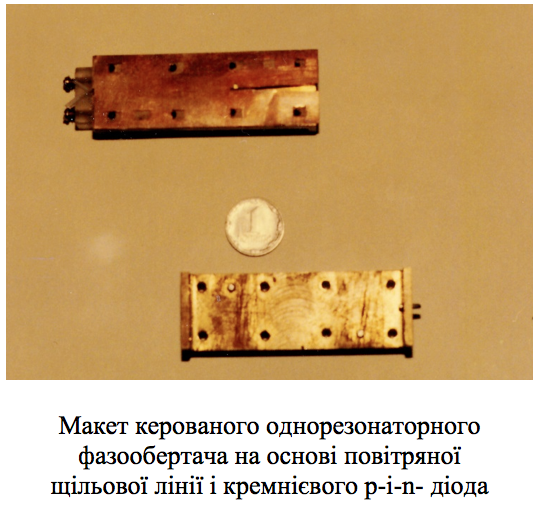Research and development of frequency selective structures millimeter wave based on thin multimode dielectric resonators
Equations for the of the resonant frequency and Q-factor calculation for frequency-selective devices based on thin dielectric resonators are found. Calculation error is less than 1 ... 2% for frequency and 5 ... 7% for Q-factor These equations can be the base for automatisation of calculations during the design of the devices on the base of thin dielectric resonators.
It is shown that on the basis of thin dielectric resonator can be created filters and controlled microwave phase shifters of UHF range with the characteristics suitable for practical use. It is proved that the semiconductor structures, such as p-i-n diodes, exhibit Microwave dielectric properties and can be used as resonant elements in the millimeter wavelength range.
The main advantage of such semiconductor resonance structures is the ability to implement the resonance frequency electronic control, which considerably increases their functionality.
The design of controlled microwave systems based on the thin dielectric resonator is proposed. This design comprises a resonant element disposed in the waveguide, and the control element. As resonant element is used thin dielectric resonator, and as control element is used stepper motor controlled by the microcontroller. The claimed technical solution will increase the control accuracy, will reduce the driving voltage and will eliminate hysteresis inherent to piezoelectric systems.
The constructions of the millimeter waveband filter and phase shifter based on a semiconductor p-i-n-structures are proposed. In These constructions p-i-n-structure in the same time play two roles: firstly it is a resonator and secondly it is a control device. An electrical properties of such-structure depend on direct current which pass through it. The proposed design solves the problem of reducing the overall size, reducing the control voltage and improving the control of the resonance frequency adjustment rate due to lack of inertia of moving parts.
These devices are well consistent with the microstrip lines and may be made by well-established planar process. This fact in the future can help to combine in a single process cycle on a single substrate the active components,the resonant devices and the transmission lines.

| Attachment | Size |
|---|---|
| 960.93 KB |




